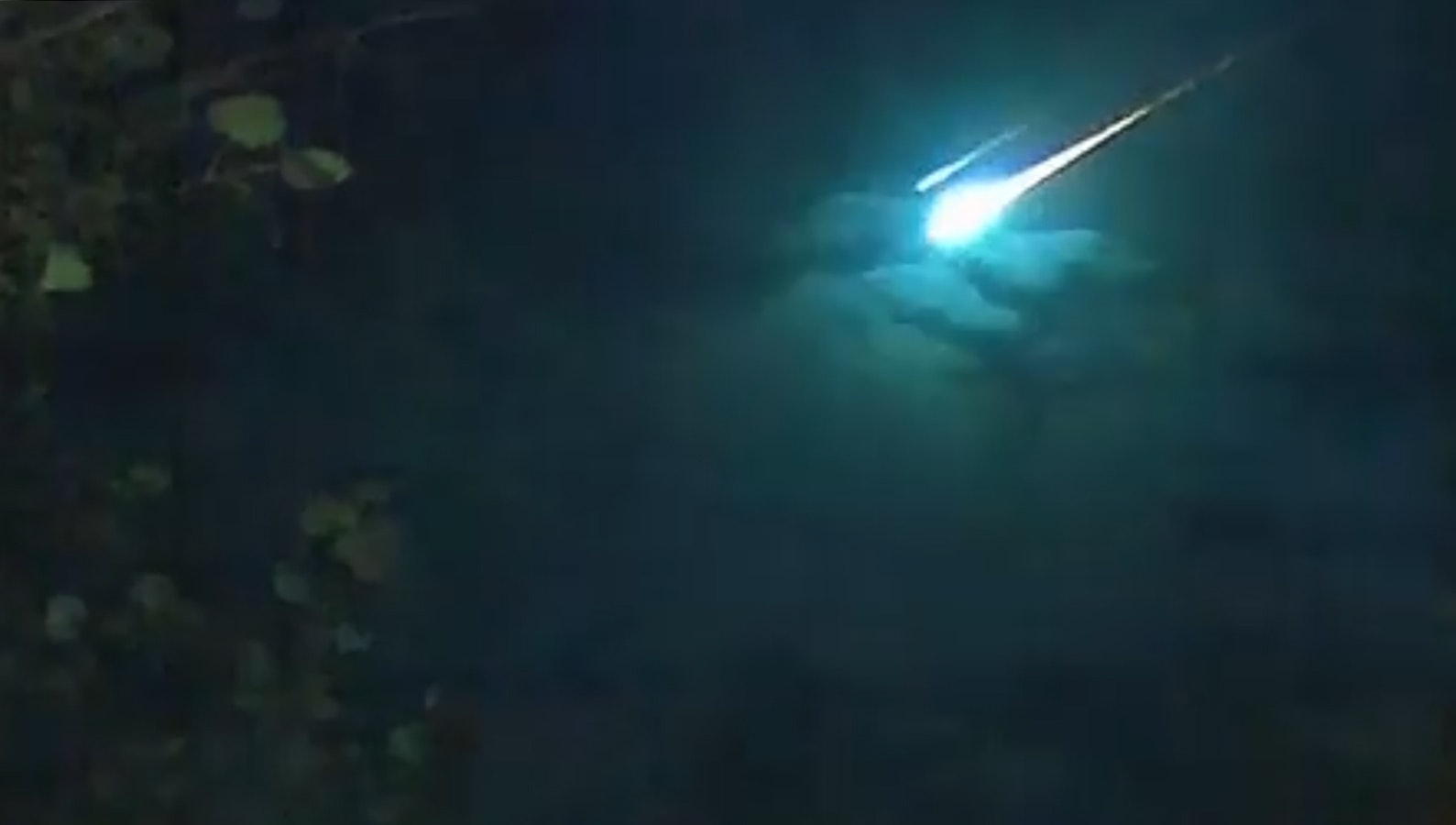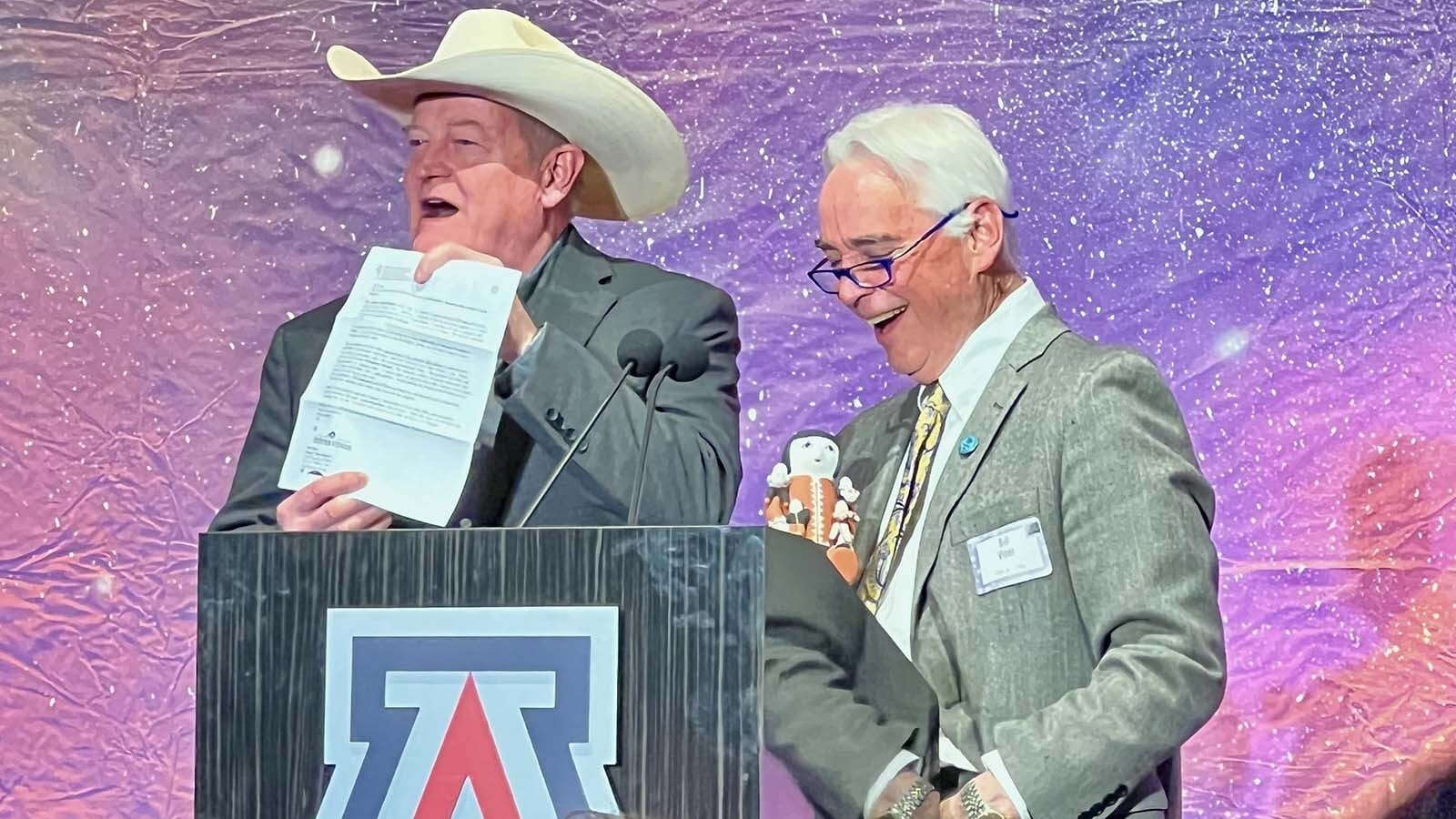A giant fireball that streaked across the sky over southern Wyoming in the wee hours Sunday morning was likely an unusually large meteor.
Max Gilbraith, planetarium coordinator for the University of Wyoming Physics and Astronomy Department, told Cowboy State Daily that the images of the fireball captured at 3:33 a.m. by a Cheyenne man on his outside home cameras “is an absolutely incredible video.”
Gary Wisecup shared video clips his home surveillance cameras captured of the meteor to the popular Wyoming Through The Lens Facebook page. They clearly show a large object streaking through the sky southwest toward Colorado, including one where it’s apparent the meteor had begun to break up and threw off another smaller one.
A meteor this large and bright is called a fireball, Gilbraith said, adding that he was excited to see Wisecup’s video.
“This one seemed large enough you might find a meteor on the ground from the thing,” he said. “This was very cool. All the meteors, comets, asteroids from space are all formed in a lower gravity environment. That means they will flake apart in really weird ways.
‘It’s A Big One’
While difficult to say just how large this particular meteor may have been, Gilbraith said it was substantial.
“It’s a big one, to say the least,” he said, adding it would’ve had to be for it to be that bright and visible on a home video camera.
“Normally, with that level of light pollution, you wouldn’t see any normal meteors,” he said. “This looks like one of the biggest fireballs we’ve seen in the last year, at least.
“Surveillance cameras aren’t set up to observe dim nighttime stuff, so to get something that’s brighter than a street lamp or your neighbor’s porch light is incredible.”
Could Be In Colorado
Numerous other videos and sightings of the fireball have been reported around northern Colorado.
Wisecup said in the Facebook thread that his camera was facing southwest from his home in north Cheyenne. He also posted a full version of both videos, complete with slow motion views, to his YouTube channel, WyomingOutdoors.
From that description, Gilbraith said it’s possible the meteor didn’t fully break up in the atmosphere and a piece of it could have landed somewhere in northern Colorado, “probably somewhere in Rocky Mountain National Park. … That one seemed large enough you might find a meteor on the ground from the thing.”
Probably A Perseid
While the fireball captured by Wisecup’s video and reported across southern Wyoming and northern Colorado was unusually large, Gilbraith said he’s not surprised it would show up now.
That’s because we’re in the middle of the annual Perseid meteor shower, and smaller meteors have been streaking across the sky for weeks. And while not typical, it's entirely possible to see fireballs from the Perseid.
“This matches more or less what could be a Perseid,” he said. “There are occasionally these fireballs. Typically when you see the meteor leave a trail and streak through the sky for several seconds like this, we call that a fireball, and they’re just amazing, once-in-a lifetime experiences.”
As the Swift-Tuttle comet orbits the sun, it leaves a tail of debris, Gilbraith explained. Then as the Earth orbits the sun, at this time of year its orbit intersects with the comet’s tail. That’s why the Perseid shower is predictable and has been documented for more than 150 years.
“We come in contact with that tail, passing through a different part of the tail every year,” he said. “The comet tail is throwing out stuff in a huge (path) millions and millions of miles around the sun.”
People who happened to be watching the sky at 3:33 a.m. were lucky, he said, because for Wisecup “to capture this on video is, if you excuse the phrase, just astronomical.”
Greg Johnson can be reached at greg@cowboystatedaily.com.





